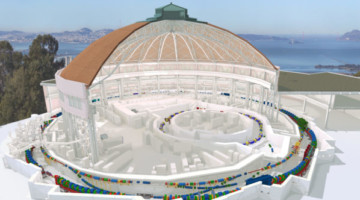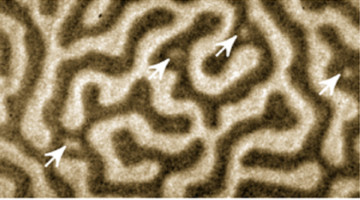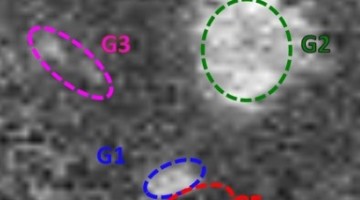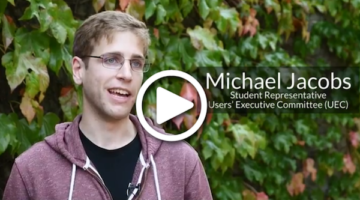The ALS Upgrade (ALS-U) project has received federal approval (CD-1) to proceed with preliminary design, planning, and R&D work. This major upgrade will boost the brightness and coherent flux of ALS soft x-ray beams at least a hundredfold, enabling transformative science that cannot be performed on any existing or planned light source in the world. Read more »
ALSNews Vol. 398
September 26, 2018
A 2D Lattice of Molecular Qubits for Quantum Computing
Researchers developed a way to build a 2D lattice of molecular-spin qubits (quantum bits of information), with control over qubit orientation and localization. The work enables the integration of molecular quantum-information hardware into the scalable, robust, solid-state architectures needed for performing quantum computation. Read more »![]()
![]()
Clues to the Solar System’s Original “Bricks and Mortar”
In comet dust, researchers discovered composite organic-inorganic mineral grains that are likely to be the original “bricks and mortar” of the solar system. “Forensic” samples preserved from the birth of the solar system allow investigations into the nature of the atomic and molecular ancestry of the terrestrial planets and life on Earth. Read more »![]()
![]()
Ordered Magnetic Patterns in a Disordered Magnetic Material
Scientists have confirmed the presence of chirality, or handedness, in nanometers-thick samples of amorphous (noncrystalline) multilayer materials. The chirality—which potentially could be exploited to transmit and store data in a new way—was observed in the domain walls between neighboring regions of opposite spin. Read more »
Nanoscale Characterization of Iron and Calcium in the Alzheimer’s Brain
The amyloid plaques that accumulate in Alzheimer’s disease contain stores of iron. Using scanning transmission x-ray microscopy, researchers have characterized the iron’s chemical states in unprecedented detail. Their nanoscale analysis revealed excessive chemical reduction of the iron, which can release damaging free radicals. Read more »
Pupa Gilbert to Receive the 2018 Shirley Award
Pupa Gilbert, professor of physics at the University of Wisconsin at Madison, is the 2018 recipient of the David A. Shirley Award for Outstanding Scientific Achievement at the ALS, “for her development of polarization-dependent imaging contrast mapping to image the orientation of carbonate nanocrystals in marine biominerals.” Read more »
Alex Hexemer, Senior Scientist and Computing Program Lead
Alex Hexemer leads the newly formed Computing Program at the ALS. His previous experience as a postdoc and beamline scientist at the ALS has prepared him for the challenges and opportunities in computing for high volumes of data. Read more »
Mike Martin and Hendrik Ohldag Named 2018 APS Fellows
Two ALS scientists have been named Fellows of the American Physical Society. Mike Martin, a senior scientist and operations lead for the Photon Science Group is recognized “for the advancement of synchrotron infrared spectroscopy including the development of synchrotron infrared nanospectroscopy and 3D FTIR tomography.” Hendrik Ohldag, a staff scientist who joined the ALS earlier this month, is recognized “for contributions to unique insight into complex magnetic materials with unprecedented spatial and temporal resolution using novel x-ray techniques.” Read more »
Final Registration Reminder for the ALS User Meeting, October 2-4
Online registration for this year’s User Meeting closes Thursday, September 27. This year’s event features an exciting new format designed especially with students and early career scientists in mind. We will also celebrate the ALS’s 25th anniversary with retrospective talks about how the ALS was built and how our science has evolved over time. Read more »








